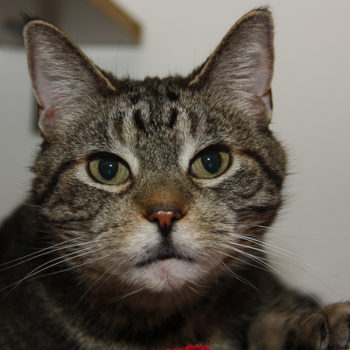“Ramp up your medical programs for seniors, folks – soon enough you’ll be seeing far more of those than adoption age kittens.”
Those words were posted by Karina King, Director of Operations for the Dakin Humane Society, on a Million Cat Challenge discussion forum.
For communities at the height of their kitten season, the thought of a day when baby cats won’t fill their adoption floor may seem not just overly optimistic but actually impossible. Sheltering teams from other parts of the country, however, may see a familiar pattern in the numbers King shared with us in a recent interview.
Dakin Humane is an open admission shelter in Massachusetts serving a three-county area with a population around 700,000. “The change we experienced in our local service area was in two parts,” King said. “First, the number of incoming local kittens plummeted from about 850 in 2010 to about 200 in 2016.
“This I attribute to ongoing and large scale spay/neuter efforts; we aren’t the only ones providing surgery in our area, but we’ve done about 80,000 spay/neuters in the past 7 years. It’s spay/neuter that drives the change in population.
“Second, the number of incoming cats over 10 years in age went up from about 150 to about 250.”
This shift in intake has driven a re-examination of shelter programs and priorities, and suggests action steps organizations seeing early signs of a similar pattern can take.
For example, King said, “As our kitten population has shifted, we now see very few friendly, basically healthy adoption-age kittens arriving. The few kittens who still arrive are those who are too challenging for the community to manage on its own.” These kittens are mostly babies born in feral colonies, who require more work to get ready for adoption than kittens resulting from a pet cat’s “oops” litter.
Dakin found that changes in the population seen in their shelter required matching changes in the organization.
“We doubled our vet staff (both vets and techs),” said King. “This wasn’t only because of the seniors, but also because with the shift in population all the animals require a lot more care. For us, this meant moving from one adoption center vet and two spay/neuter vets to the opposite, and support staff to match, since the need for mass spay/neuter in the community declined over time while the challenges of the animals in the adoption center increased.”
King says shelters that start to take in more senior cats will need to refocus on their organization’s capacity for care. “That doesn’t just mean the number of bodies in the building, as it has classically meant,” she explained. “Now it means things like how many meds can your medical staff reasonably administer each day? How many cats can they weight-track and give SQ fluids and appetite stimulants to? How many major dentals that take 3+ hours can your vet team perform each week? How many ‘special’ spaces such as offices do you have where stressed-out cats can live if they can’t live successfully in cages or regular colony spaces?”
Organizations will also have to develop more resources and approaches to adoption and working with foster-based rescue groups. “How many adopters can your organization find willing to take on seniors with significant, yet routine, diseases of older cats, such as kidney disease and hyperthyroidism? Placing healthy seniors has gone okay for us; we’ve even placed a 21-year-old and a 19 year old FIV+ cat. But placing 14-year-olds with significant medical issues that will only worsen and get more expensive to manage? We haven’t found nearly as many adopters willing to take that cat home and get to know her, as we now receive as intakes.”
While spay/neuter is responsible for the decrease in kitten intake, King isn’t sure what’s driving up intake of older cats.
“One possibility is that while we are open admission, we are transparent with our abilities and capacity,” she said. Where they once would have warned people that options for a surrendered senior were going to be limited, they now have more capacity to accept these cats.
Could more of those cats be kept with their existing families? “Many of them are coming in because their elderly owner has passed away, or gone into care,” she said. Without having to dedicate as many resources to — or compete for adoption with — an onslaught of kittens, shelters can provide a necessary safe harbor for those cats until a new home is found.
However, said King, many of the older cats are being surrendered because their family can’t manage their medical needs. “A program that supports cats with chronic and ongoing senior cat issues such as kidney failure and hyperthyroidism may be able to support those cats remaining in a home, but their medical issues aren’t ‘fixable’ as we can do with a broken leg, parvo and the like.”
One way shelters can better serve a growing senior cat population is by developing expanded volunteer services, similar to programs in many cities that visit the elderly and others with health and disability challenges to provide daily care for their pets. Animal organizations can also look to create or expand funds that assist with veterinary costs, which often prove an obstacle to keeping those with low or fixed incomes together with their beloved older pets.
“Other types of organizations will have different experiences even as their area goes through the same transition from a time of feline overpopulation to whatever comes after that,” King said. “Even if we still have trouble wrapping our heads around that idea! But one thing is sure: the seniors are coming, and we all need to be ready.”

